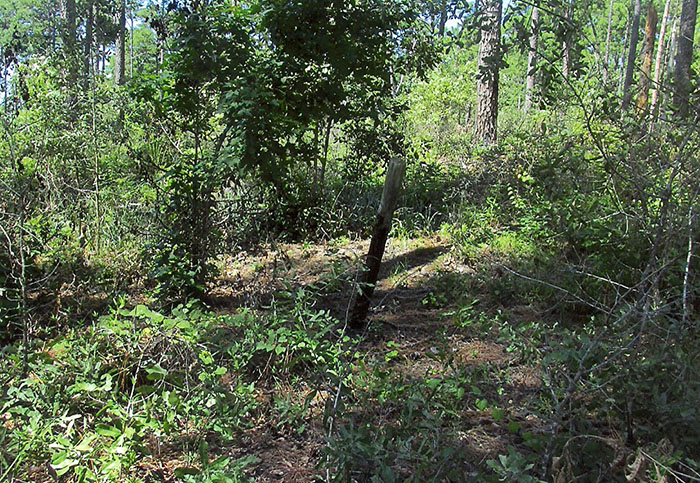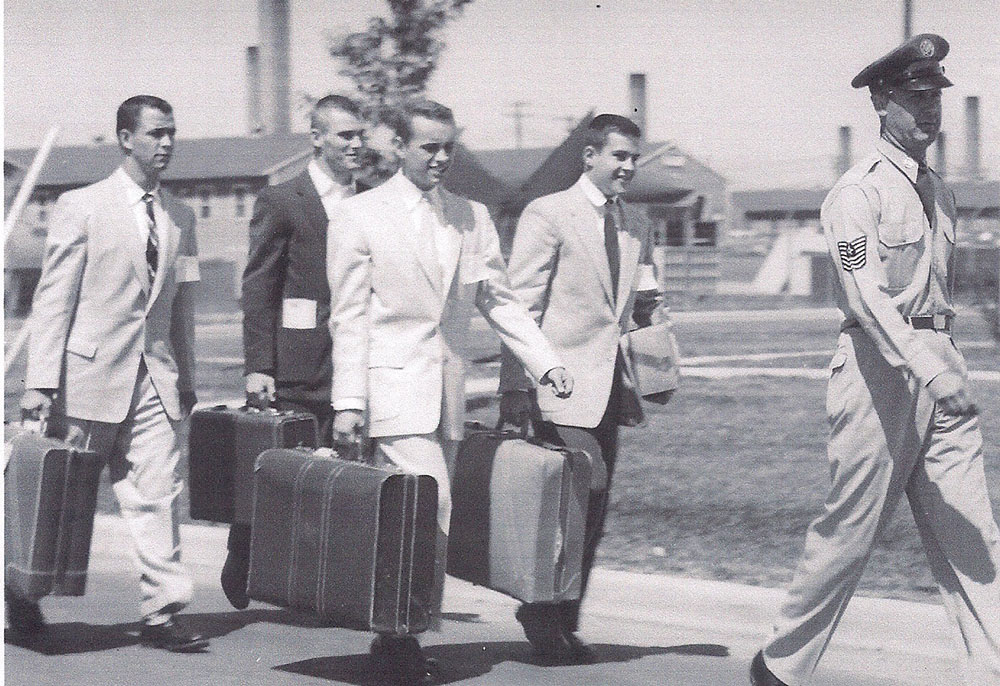IN REMEMBRANCE OF CAPTAIN JAMES C. FEY USAF
BY RICKEY ROBERTSON
During the Louisiana Maneuvers of 1941 with troops scattered throughout western Louisiana, the lands known as Peason Ridge were found and were used by units involved in this exercise. This was to become one of the United States military's premier training sites. By using imminent domain, all the settlers, sharecroppers, and homesteaders of Peason Ridge were removed by 1944. Peason Ridge Artillery Reservation was founded and has been in continuous use since World War II. But beginning in 1964 the United States Air Force obtained use of Peason Ridge for bomb and gunnery training for units that would eventually be sent to Southeast Asia. By 1964 President Lyndon Johnson began sending more U.S. advisors, aircraft and crews, and supplies to South Vietnam to help that fledgling government. With this increase, England Air Force Base became a training and proving ground for Air Force pilots and personnel who would eventually be shipped to Vietnam. And where was their toughest training area ? Yes, the rugged and remote Peason Ridge Military Reservation lying within Natchitoches, Sabine, and Vernon Parishes in Louisiana.
In 1964 the U.S. Air Force began to build target's for both bombing and strafing on Peason Ridge. They also began to build a compound located at Eagle Hill, the second highest elevation in Louisiana that would also be the site of a portable small forward air controller building where the combat controllers could clear the incoming aircraft onto the range. During this time frame the U.S. Air Force was flying F-100 Super Sabre aircraft. These F-100's could fly missions both day and night against the various targets. One of the units flying the F-100's was the 510th Tactical Fighter Squadron which had transferred from Clark Air Force Base in the Philippines to England Air Force Base in Alexandria, La. in March 1964. One member of this squadron was Captain James. C. Fey, an experienced pilot who had actually served a short tour of duty in Southeast Asia.
In the spring and summer of 1965 the F-100's began to fly missions on Peason Ridge in both daytime and nighttime. At night several special targets had been constructed for the nighttime "Night Owl" gunnery and bombing missions. One target was known as the "night convoy" and was made up of old military trucks in convoy formation such as North Vietnamese convoys would travel on the Ho Chi Mihn Trail. The other site was known as "Sam Site Hill" where other trucks had been placed in revetments with old telephone poles sticking from them to depict the anti-aircraft missile batteries being used by the North Vietnamese Army to protect their towns, cities, and military installations. Many many nights during the Vietnam War the residents of the Peason Community have seen the F-100's bombing and strafing and training for deployment to Southeast Asia.
On Tuesday night October 19, 1965 Captain James Fey flew from England Air Force Base to begin his first "Night Owl Mission" on Peason Ridge. But something happened. Captain Fey 's F-100 flew a circle and left the airspace over Peason Range and in just minutes, the aircraft crashed into the Kisatchie National Forest resulting in the loss of Captain Fey. The location of the crash was in a remote part of the Kisatchie National Forest right on the parish line of Sabine and Natchitoches parishes. The old community of Coburn in Sabine Parish and the community of Bellwood in Natchitoches Parish were each just a couple of miles from the site.
Watching the aircraft that evening was Autrey Marr and his father-in-law George Matthews. They were out in Mr. Matthew's front yard and they saw the F-100 circle off the range and in just a few seconds they saw a big flash on the horizon followed in just a few more seconds the sound of a big explosion. Mr. Matthews told Autry "that plane just crashed". He knew the direction the plane had followed so they got into their vehicle and headed to Eagle Hill to tell Air Force personnel of what had happened. As they got to Eagle Hill they met the Air Force personnel and told them to follow so that they could get them to the crash site. The site was located and in my interview with Autrey Marr he described that the woods were on fire and the F-100 had first struck an extremely large pine tree and then had crashed and exploded on impact with the ground. Autry and Mr. Matthews got the USAF teams into the crash site and helped search and secure the site. In researching this story of the F-100 crash, several things could not be found out until I conducted some interviews and from my own experiences on seeing and being at the crash site. Over the many years I could not find any information on the crash and it is not listed on the USAF list of crashes. But one thing Autrey Marr never forgot was that on the night of the crash as they searched for the pilot, he found the flight bag of Captain James C. Fey, with his name stenciled on it, and he turned it over to Air Force personnel. Autry never forgot the name of the pilot throughout the many years. I also interviewed John Salter, who had been to the crash site on the weekend after the crash. He remembered the engine had been thrown a long distance and was up the hill from the impact site and he also gave me a close appraisal of the possible year and month, since being over 50 years later, we just could not remember the exact date. And a few days after the crash my Dad carried us to the location and we were able to see the wreckage and destruction. Trees were broken off, the area had been burned off, and Air Force personnel were there going through the wreckage. A terrible loss….a loss that should not be forgotten.
On Saturday September 3, 2016 I carried my wife Patsy with me and I again returned to the old crash site. Fifty one years later you can still tell where the crash occurred, even though much of the forest has again grown into large timber. The area where the JP-4 aviation fuel burned so hotly is still devoid of much undergrowth. As we walked around the area I found slivers of glass from the cockpit and even a small bolt from the engine in the sand. More exploration around the site during cooler weather and as the underbrush thins after the first frost will possibly produce even more items relating to the crash. As we walked over the old crash site I could remember what I saw at the site so many years ago. After visiting the site I was also able to gather more information to make this story possible by being able to contact the U.S. Air Force Academy Class of 1960 in which Captain Fey was a member. The members of this class were gracious enough to share some photographs of Captain Fey to go along with this story. They have never forgotten their classmate.
Fifty one years later we also remember that Funeral Services were held at St. James Episcopal Church in Alexandria, La. for Captain Fey several days after the crash. Pallbearers were his fellow pilots of the 510th Tactical Fighter Squadron from England Air Force Base. And several days later he was interred in the Air Force Academy Cemetery in Colorado Springs, CO. Sadly he left a wife and two small children. His wife remembered him as a caring and loving father, and a very level headed young man who just two weeks prior to his death he had been advised he would be able to attend Massachusetts Institute of Technology (MIT) where he could obtain a graduate degree in engineering that would allow him in the future to teach at the U.S. Air Force Academy.
This is a story of remembrance. Every American serviceman or woman, when taking the oath of allegiance to this great nation and in defending its constitution, that they may have to make the ultimate sacrifice in the line of duty. Yes, even in training, many lose their lives in preparation for their future assignments. On this fifty first anniversary of the crash that took the life of Captain James C. Fey, we remember him, but let us also remember all the many others that have given their lives in the defense of our nation and our way of life. Through the sacrifice of so many we continue to have freedom in this great nation known as the United States of America.
.jpg)
.jpg)
Gravesite of Captain James Carl Fey USAF at the U.S. Air Force Academy Cemetery (Courtesy U.S. Air Force Academy Cemetery)
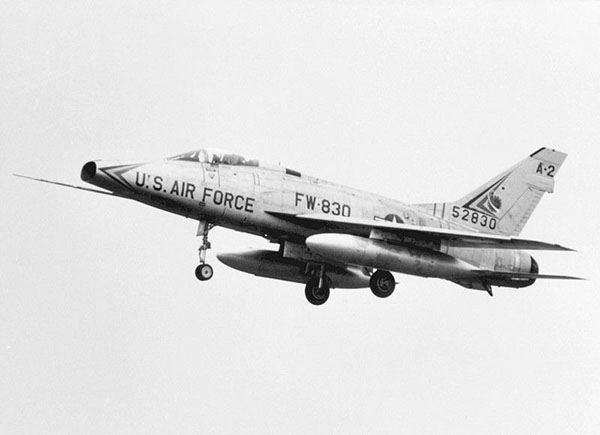
F-100 Super Sabre jet such as was flown by Captain James C. Fey (Courtesy U.S. Air Force)
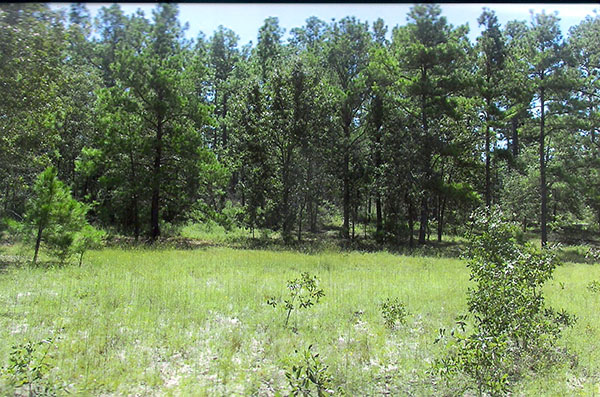
Crash site location of the F-100 piloted by Captain James Fey in the Kisatchie Nation Forest. This is the area burned by the aviation fuel after the crash. (Robertson Collection)
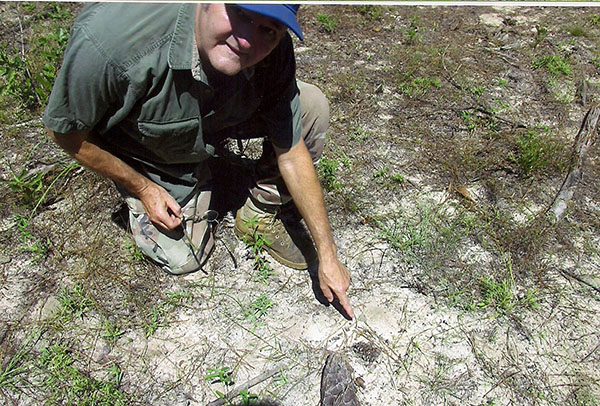
The author pointing to the engine bolt found at the crash site of the F-100 piloted by Captain James Fey. (Robertson Collection)
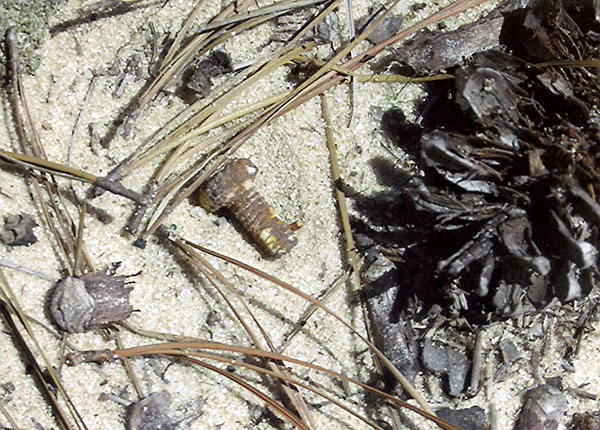
The small engine bolt found at the crash site of the F-100 piloted by Captain James Fey. (Robertson Collection)
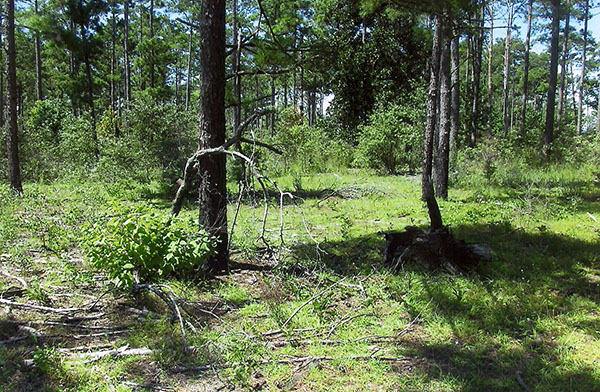
The forest land at the site of the F-100 crash in the Kisatchie National Forest. (Robertson Collection)
